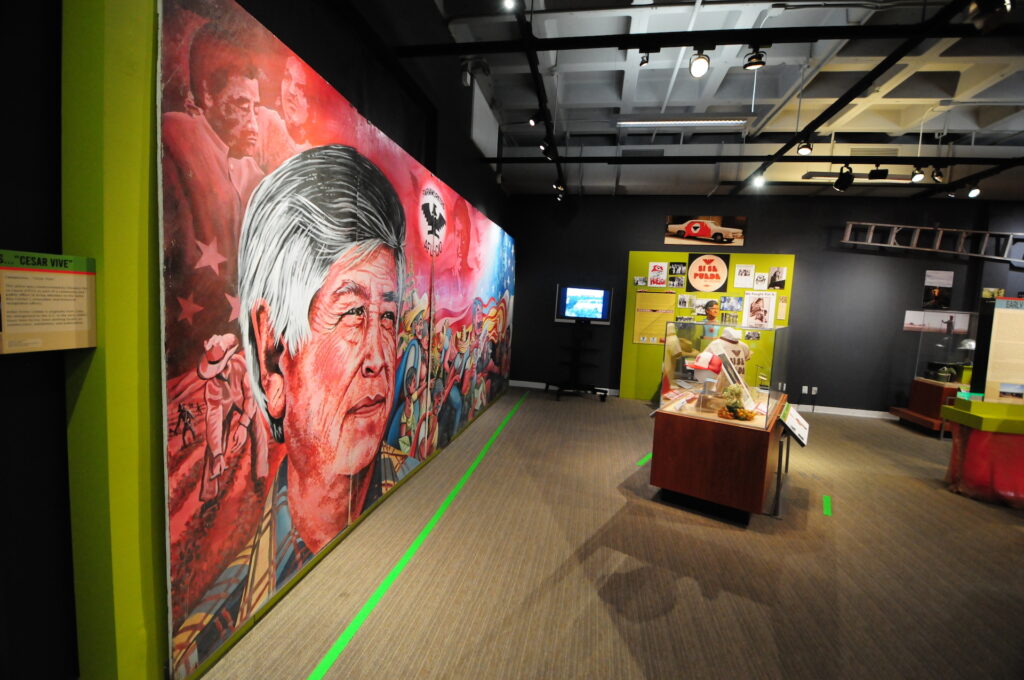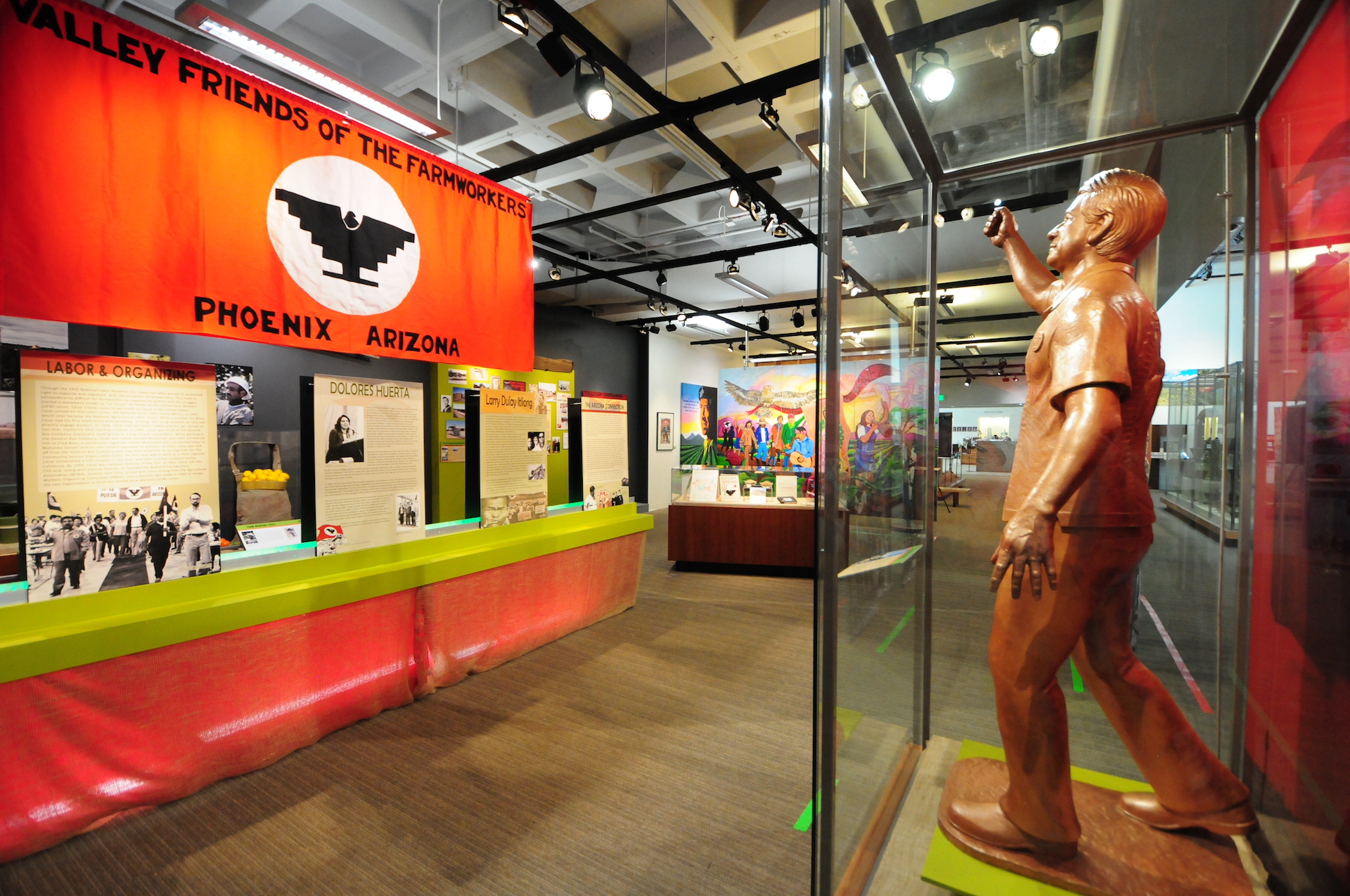(Tempe, Arizona) – Labor struggles and artistic expression have long intertwined, with each inspiring the other. Workers fight for their rights, while artists translate those struggles onto canvas or into song. When these forces collide with history, the result can be a powerful exploration of a social movement and its leader.
Such is the case with “Extending a Hand, Cesar Chavez, An Arizona Connection,” a new exhibition at the Tempe History Museum. This meticulously curated show brings together artwork by Arizona artists, alongside historical documents, photographs, and newspapers.
Conceived by Marco Albarran, the museum’s Curator of Exhibits and an artist himself, the Chavez exhibition delves into the life and work of the man who led the fight for farmworker rights in the United States during the 1960s and 70s. Cesar E. Chavez became a legendary figure during this turbulent period, organizing workers in California, Arizona, and the Southwest to demand better working conditions.
Since his death in 1993, Chavez’s stature as a historical figure has only grown. He has been the subject of books, documentaries, films, and even educational curriculums. In Arizona, particularly, artists like Martin Moreno, Zarco Guerrero and Victor Caldee have been inspired by Chavez, creating sculptures, paintings, and murals that pay homage to his life and work.
 Artist Victor Caldee’s monumental mural is a standout feature in ‘Extending a Hand, Cesar Chavez, An Arizona Connection,’ the latest exhibition at Tempe Museum of History. This piece vividly captures Chavez’s enduring influence on Arizona’s labor movement. Through bold colors and intricate details, Caldee pays homage to Chavez’s legacy, inviting viewers to reflect on his lasting impact. Photo: Eduardo Barraza | Barriozona Magazine © 2024
Artist Victor Caldee’s monumental mural is a standout feature in ‘Extending a Hand, Cesar Chavez, An Arizona Connection,’ the latest exhibition at Tempe Museum of History. This piece vividly captures Chavez’s enduring influence on Arizona’s labor movement. Through bold colors and intricate details, Caldee pays homage to Chavez’s legacy, inviting viewers to reflect on his lasting impact. Photo: Eduardo Barraza | Barriozona Magazine © 2024Cesar E. Chavez: a controversial legacy of labor activism
Cesar E. Chavez’s legacy is not without its complexities. While lauded for his nonviolent tactics and commitment to social justice, he also faced criticism for his leadership style and some of the strategies employed by the United Farm Workers (UFW), the union he co-founded.
Chavez’s fight for better wages and working conditions for migrant farmworkers exposed the harsh realities of agricultural labor in the United States. However, his tactics, including boycotts and hunger strikes, were met with resistance from growers and some within the labor movement itself.
“Extending a Hand” sheds light on Chavez’s connection to Arizona and the city of Tempe. The exhibition offers a well-rounded exploration of his life and activism, inviting visitors to grapple with its complexities and enduring relevance.
More than simply a retrospective, the exhibit serves as a bridge between past and present. It encourages audiences of all ages to consider Chavez’s legacy, particularly among younger generations.
For Albarran, the exhibition has elements that will resonate with people of all ages, making it accessible and engaging for everyone. “This exhibition is for everybody. The ‘old guard’ is something that they can see related to them, and more familiar to them, but for the younger ones, I think, because they learn about Cesar in some way or form.”
Six decades after the farmworker movement’s inception, Chavez’s story remains as complex as it is inspiring. “Extending a Hand” acknowledges both his achievements and the criticisms of his tactics.
This exhibition is a must-see for art enthusiasts, history buffs, and anyone curious about Cesar E. Chavez and the movement he led. It serves as a potent reminder of the power of art to illuminate history and inspire continued activism.
When: Friday, March 29, 6-9 p.m.
Where: Tempe History Museum, 809 E. Southern Ave.
Admission: Free
The exhibit will be on display through Oct. 6, 2024.
EXTERNAL LINK → Explore César Chávez’s life and activism through new exhibit
Related Video: ‘Extending a Hand, Cesar Chavez, An Arizona Connection’ art exhibit at Tempe History Museum
© 2024, Eduardo Barraza. All rights reserved.





